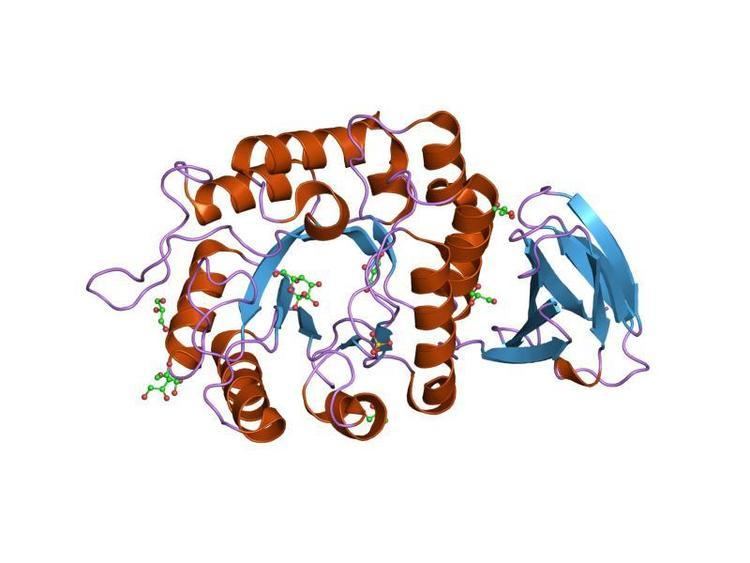Symbol Melibiase Pfam clan CL0058 SCOP 1ktc | Pfam PF02065 InterPro IPR000111 SUPERFAMILY 1ktc | |
 | ||
In molecular biology, glycoside hydrolase family 27 is a family of glycoside hydrolases.
Glycoside hydrolases EC 3.2.1. are a widespread group of enzymes that hydrolyse the glycosidic bond between two or more carbohydrates, or between a carbohydrate and a non-carbohydrate moiety. A classification system for glycoside hydrolases, based on sequence similarity, has led to the definition of >100 different families. This classification is available on the CAZy (http://www.cazy.org) web site, and also discussed at CAZypedia, an online encyclopedia of carbohydrate active enzymes.
Glycoside hydrolase family 27 together with family 31 and the family 36 alpha-galactosidases form the glycosyl hydrolase clan GH-D (CAZY GH), a superfamily of alpha-galactosidases, alpha-N-acetylgalactosaminidases, and isomaltodextranases which are likely to share a common catalytic mechanism and structural topology.
Alpha-galactosidase (EC 3.2.1.22) (melibiase) catalyzes the hydrolysis of melibiose into galactose and glucose. In man, the deficiency of this enzyme is the cause of Fabry's disease (X-linked sphingolipidosis). Alpha-galactosidase is present in a variety of organisms. There is a considerable degree of similarity in the sequence of alpha-galactosidase from various eukaryotic species. Escherichia coli alpha-galactosidase (gene melA), which requires NAD and magnesium as cofactors, is not structurally related to the eukaryotic enzymes; by contrast, an Escherichia coli plasmid encoded alpha-galactosidase (gene rafA P16551) contains a region of about 50 amino acids which is similar to a domain of the eukaryotic alpha-galactosidases. Alpha-N-acetylgalactosaminidase (EC 3.2.1.49) catalyzes the hydrolysis of terminal non-reducing N-acetyl-D-galactosamine residues in N-acetyl-alpha-D- galactosaminides. In man, the deficiency of this enzyme is the cause of Schindler and Kanzaki diseases. The sequence of this enzyme is highly related to that of the eukaryotic alpha-galactosidases.
